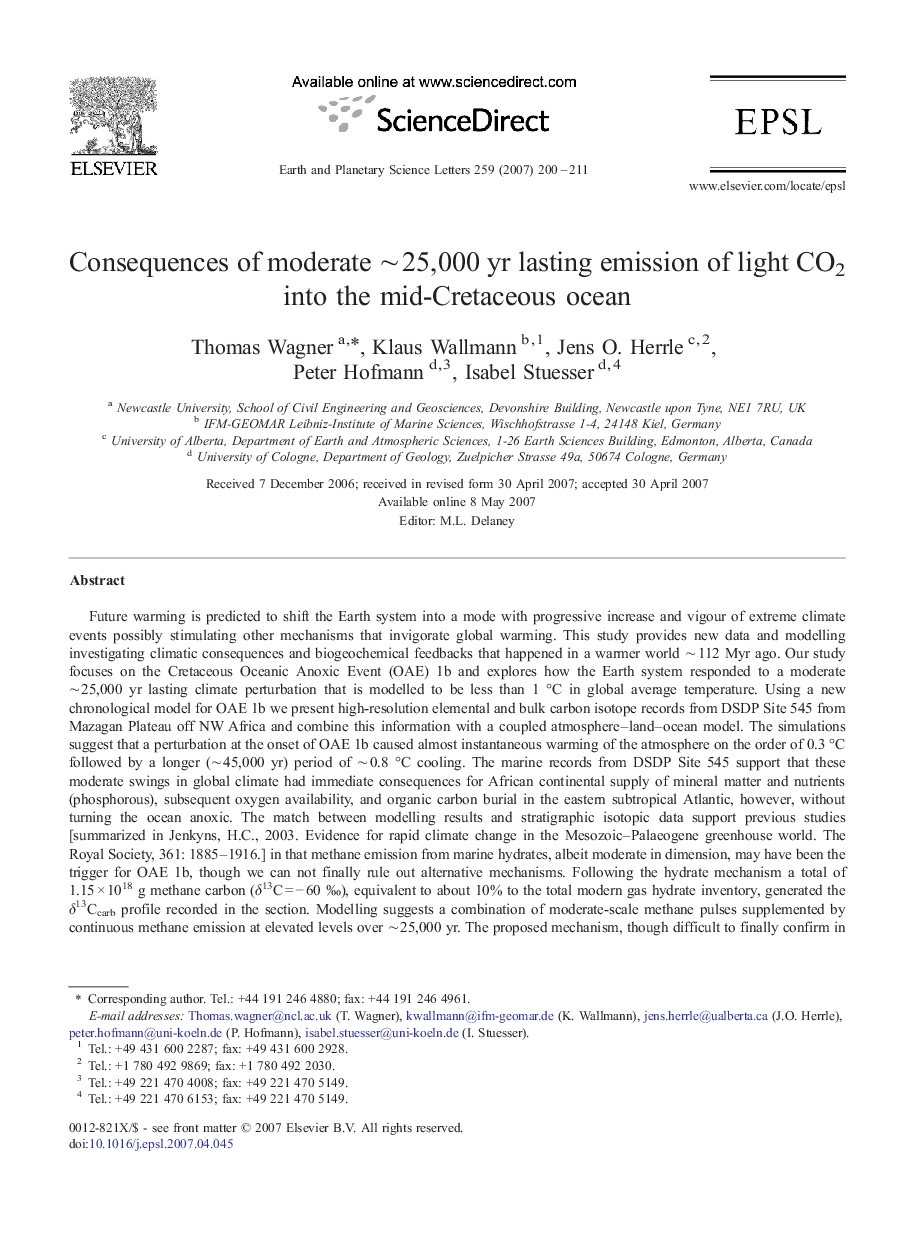| کد مقاله | کد نشریه | سال انتشار | مقاله انگلیسی | نسخه تمام متن |
|---|---|---|---|---|
| 4680292 | 1634917 | 2007 | 12 صفحه PDF | دانلود رایگان |

Future warming is predicted to shift the Earth system into a mode with progressive increase and vigour of extreme climate events possibly stimulating other mechanisms that invigorate global warming. This study provides new data and modelling investigating climatic consequences and biogeochemical feedbacks that happened in a warmer world ∼ 112 Myr ago. Our study focuses on the Cretaceous Oceanic Anoxic Event (OAE) 1b and explores how the Earth system responded to a moderate ∼ 25,000 yr lasting climate perturbation that is modelled to be less than 1 °C in global average temperature. Using a new chronological model for OAE 1b we present high-resolution elemental and bulk carbon isotope records from DSDP Site 545 from Mazagan Plateau off NW Africa and combine this information with a coupled atmosphere–land–ocean model. The simulations suggest that a perturbation at the onset of OAE 1b caused almost instantaneous warming of the atmosphere on the order of 0.3 °C followed by a longer (∼ 45,000 yr) period of ∼ 0.8 °C cooling. The marine records from DSDP Site 545 support that these moderate swings in global climate had immediate consequences for African continental supply of mineral matter and nutrients (phosphorous), subsequent oxygen availability, and organic carbon burial in the eastern subtropical Atlantic, however, without turning the ocean anoxic. The match between modelling results and stratigraphic isotopic data support previous studies [summarized in Jenkyns, H.C., 2003. Evidence for rapid climate change in the Mesozoic–Palaeogene greenhouse world. The Royal Society, 361: 1885–1916.] in that methane emission from marine hydrates, albeit moderate in dimension, may have been the trigger for OAE 1b, though we can not finally rule out alternative mechanisms. Following the hydrate mechanism a total of 1.15 × 1018 g methane carbon (δ13C = − 60 ‰), equivalent to about 10% to the total modern gas hydrate inventory, generated the δ13Ccarb profile recorded in the section. Modelling suggests a combination of moderate-scale methane pulses supplemented by continuous methane emission at elevated levels over ∼ 25,000 yr. The proposed mechanism, though difficult to finally confirm in the geological past, is arguably more likely to occur in a warmer world and apparently perturbs global climate and ocean chemistry almost instantaneously. This study shows that, once set-off, this mechanism can maintain Earth's climate in a perturbed mode over geological time leading to pronounced changes in regional climate.
Journal: Earth and Planetary Science Letters - Volume 259, Issues 1–2, 15 July 2007, Pages 200–211